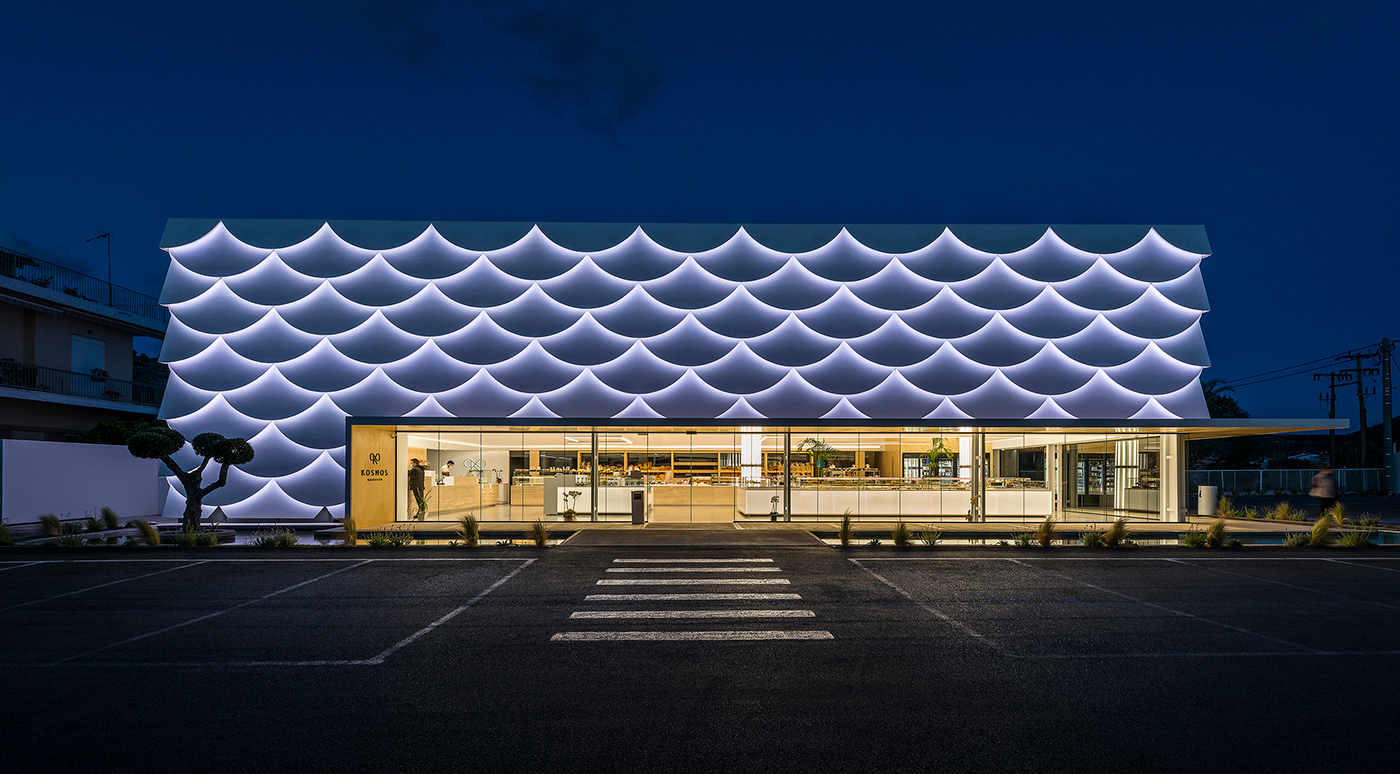
KOSMOS BAKERY & COFFEE
Nafplio Greece
designed by Studio 2Pi Architecture - Panagiotis Papassotiriou
Nafplio Greece
designed by Studio 2Pi Architecture - Panagiotis Papassotiriou
photographed by Pygmalion Karatzas

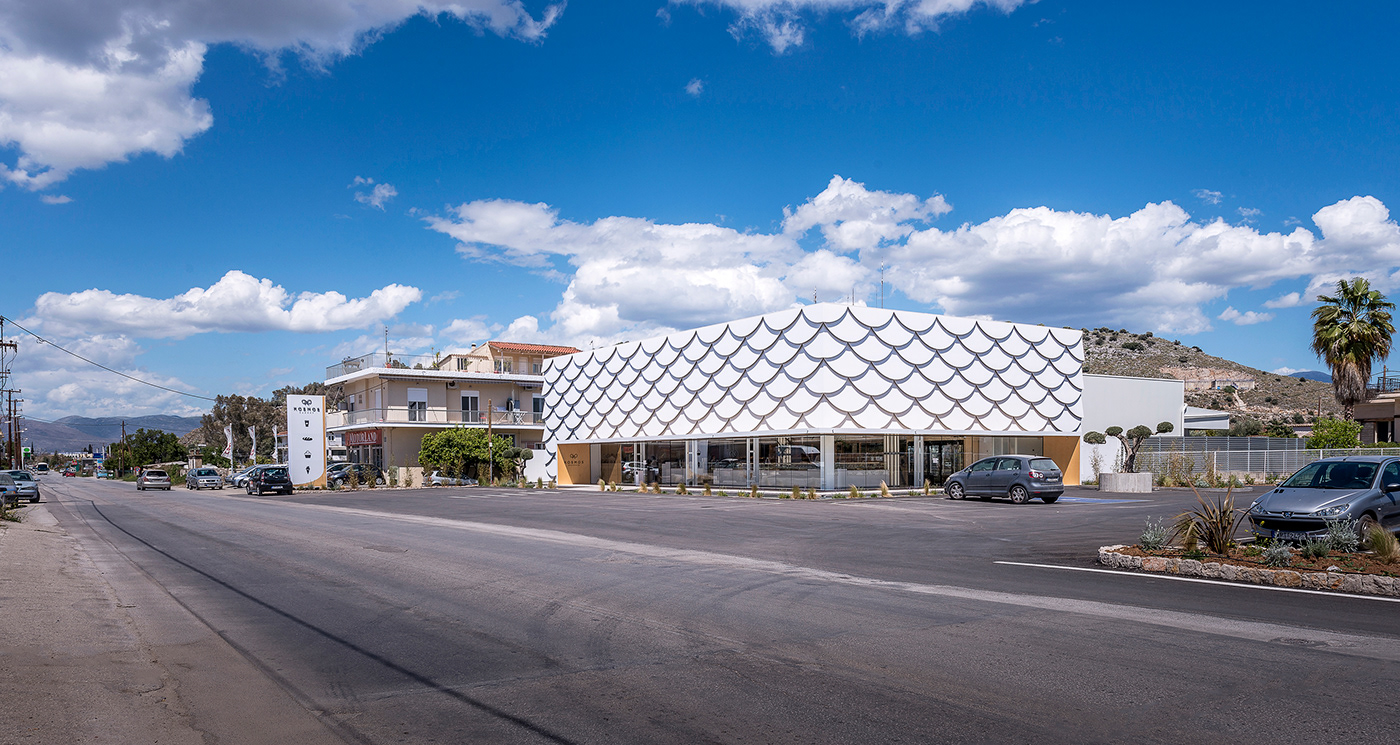
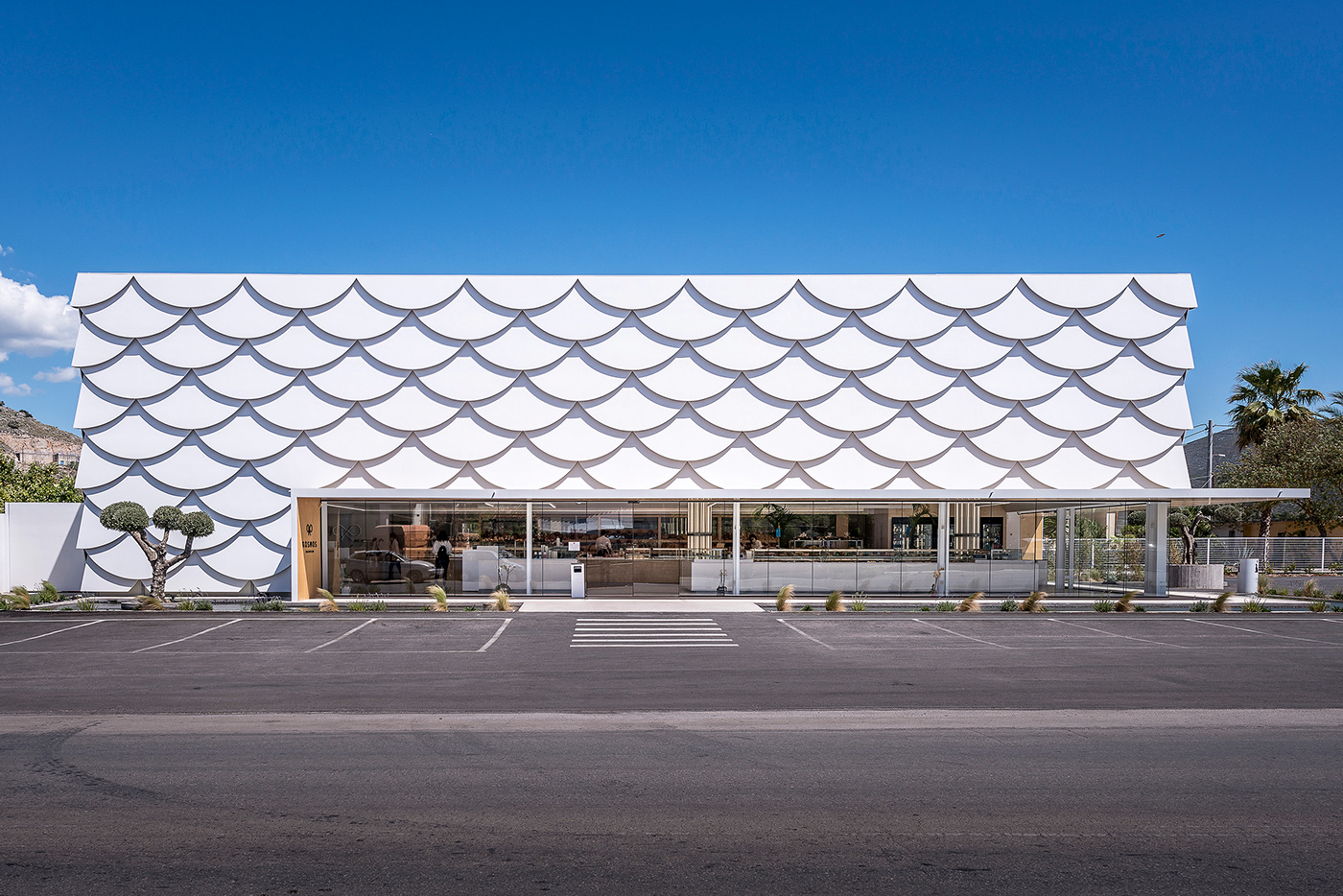
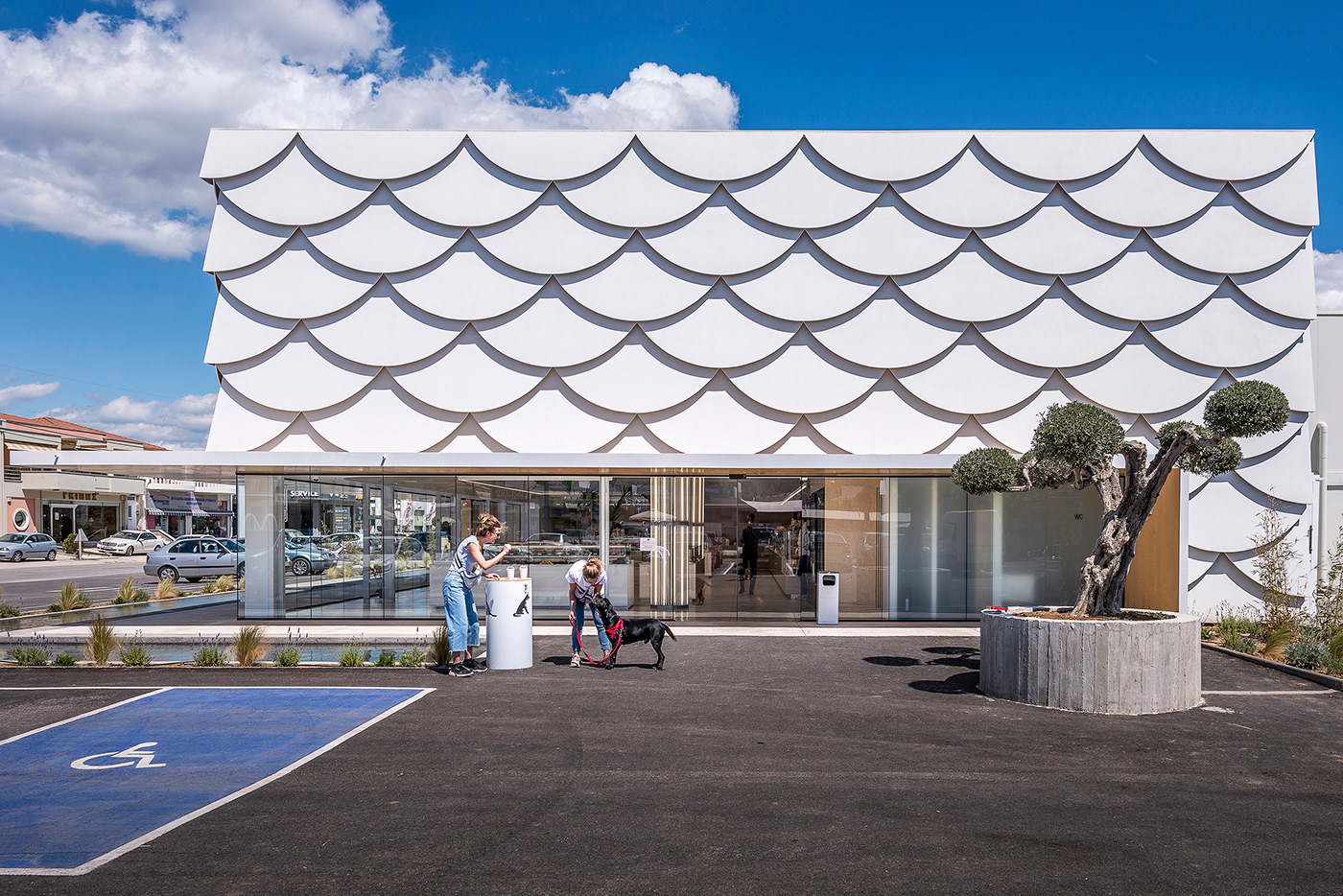
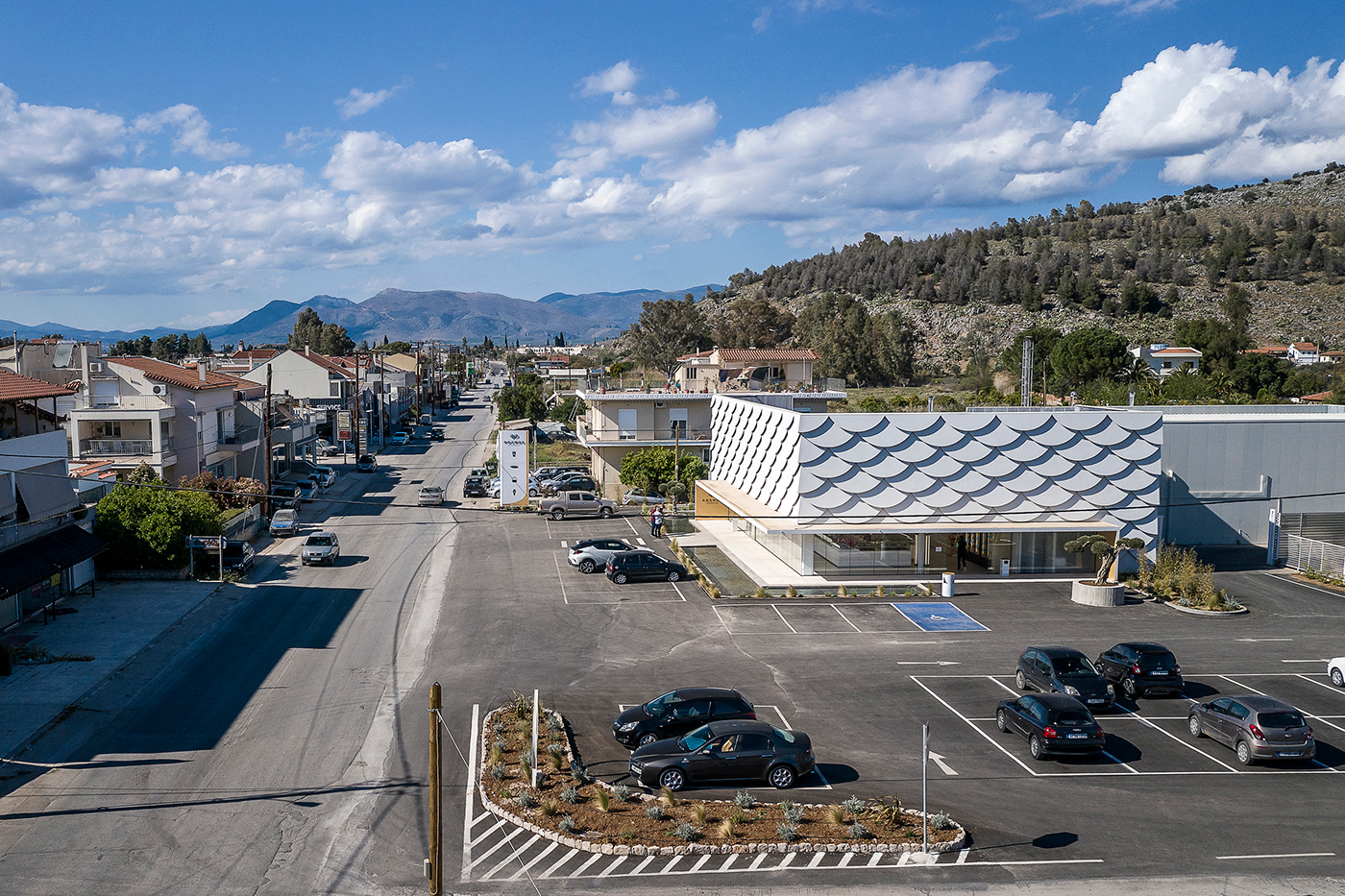
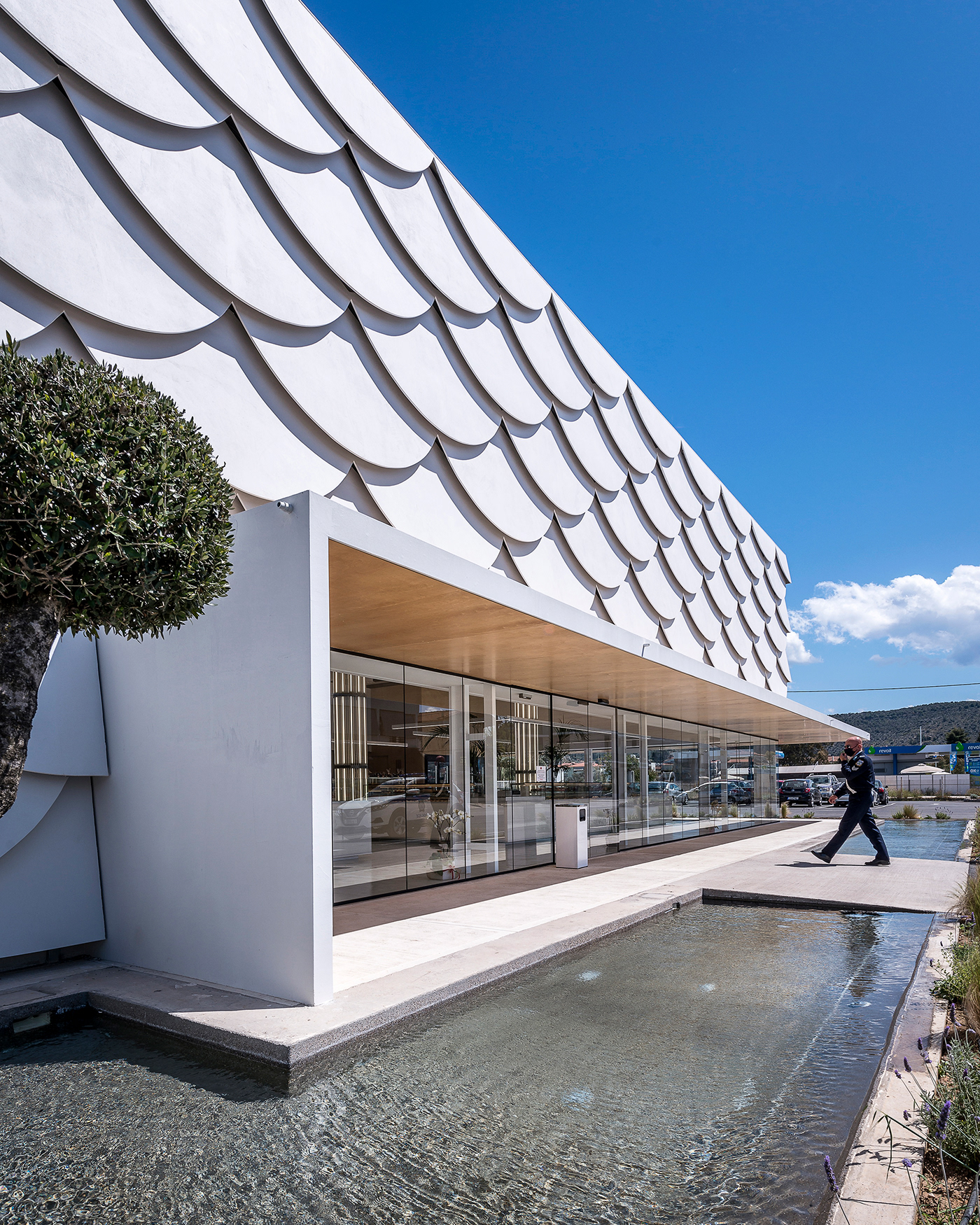
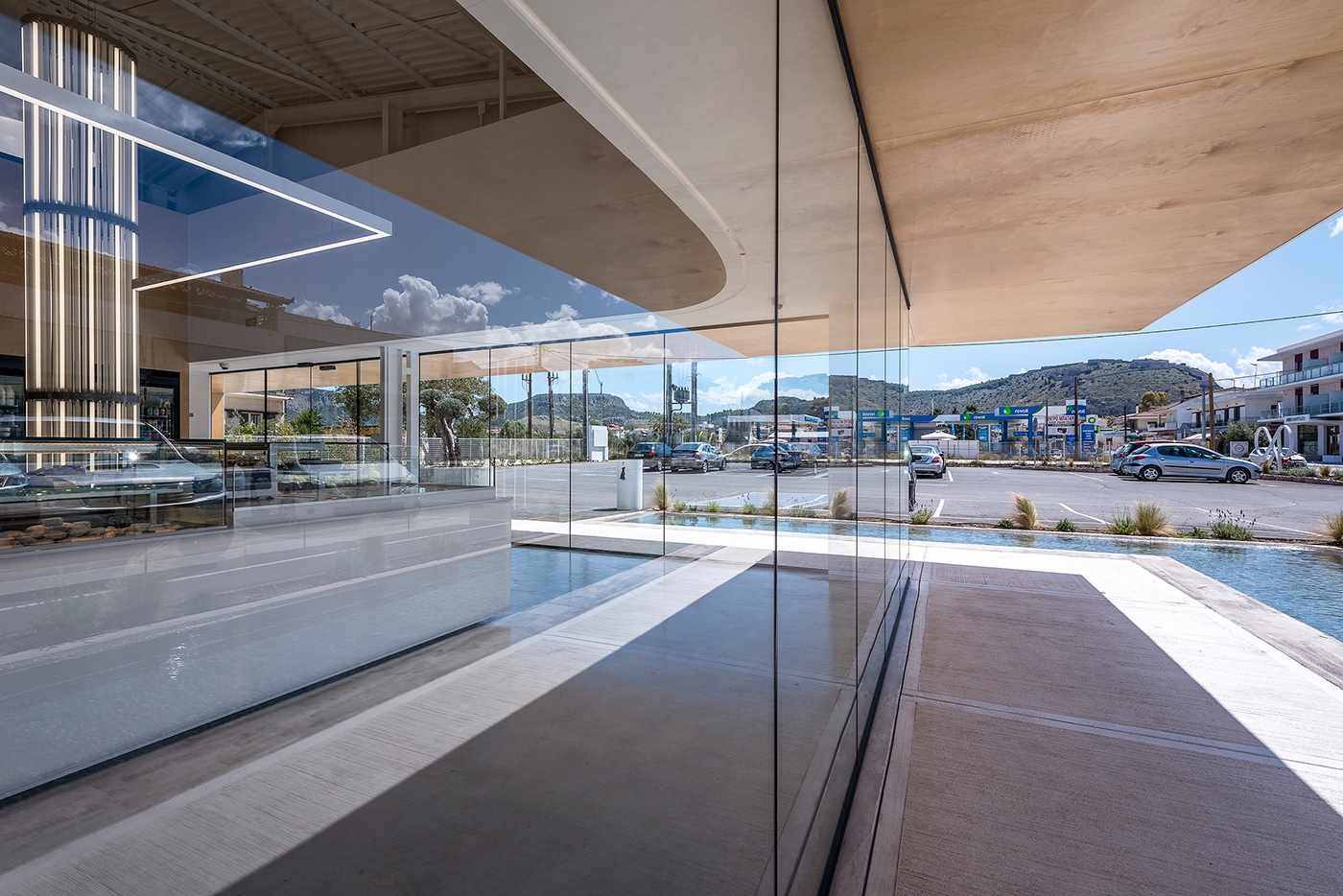
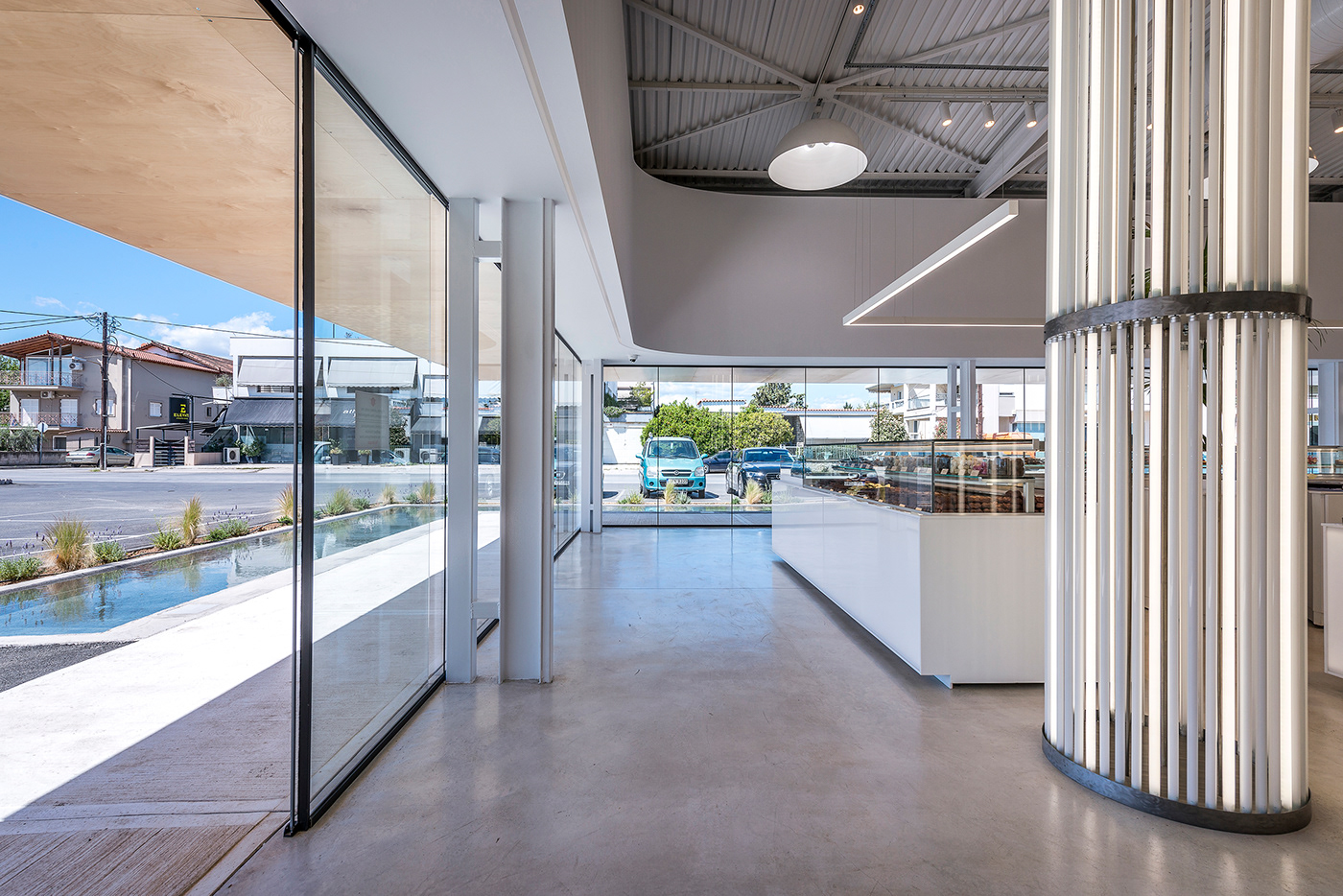
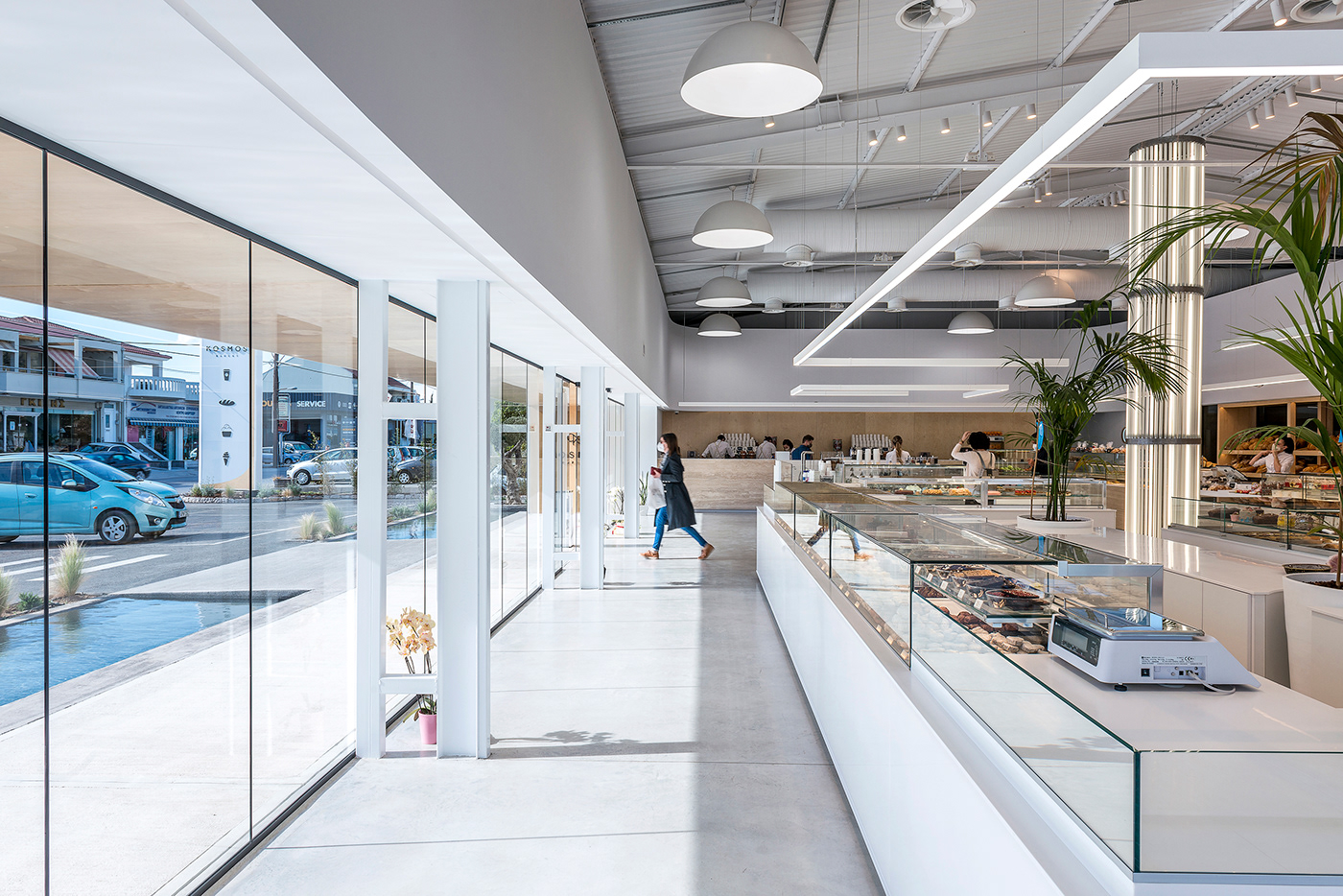




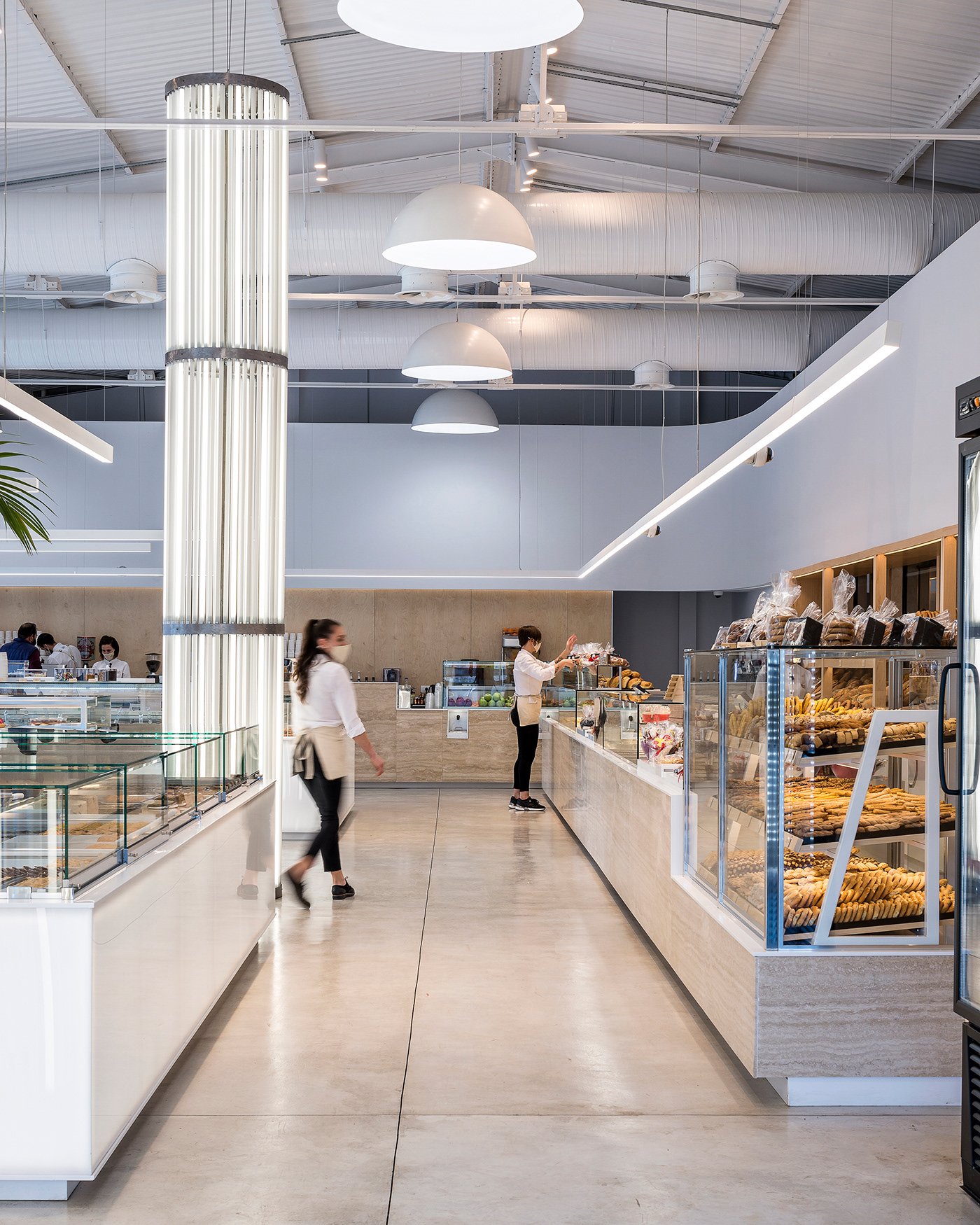
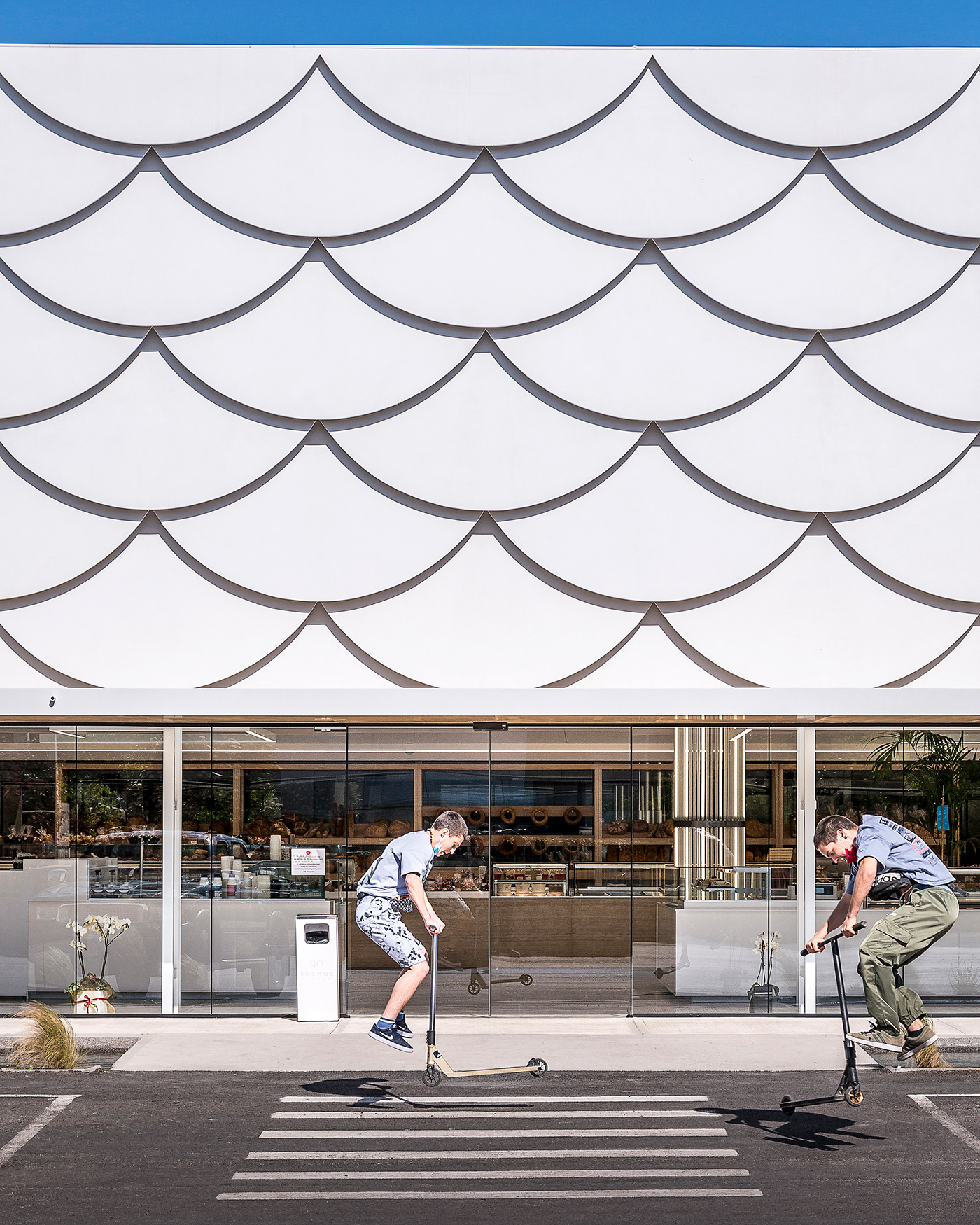
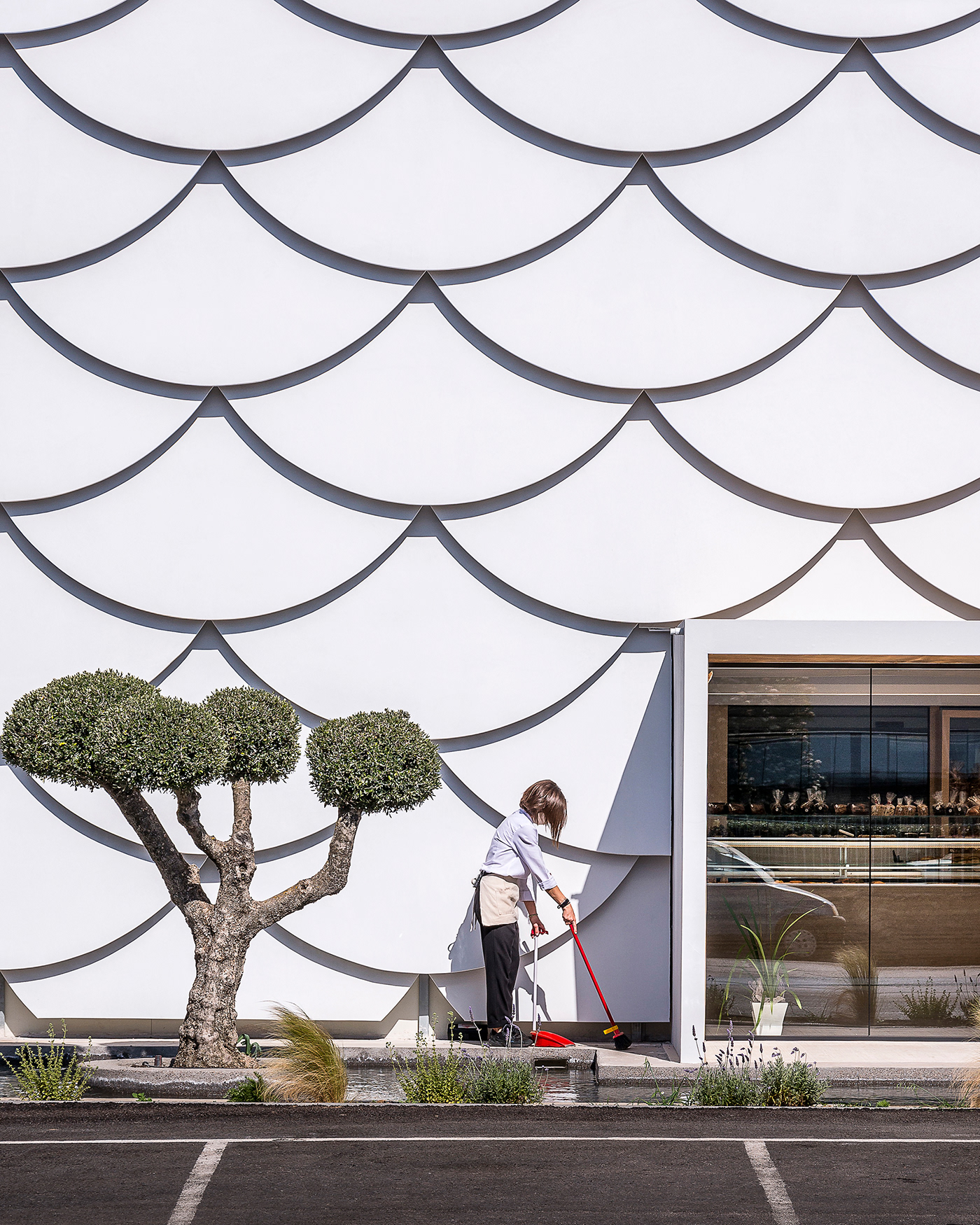
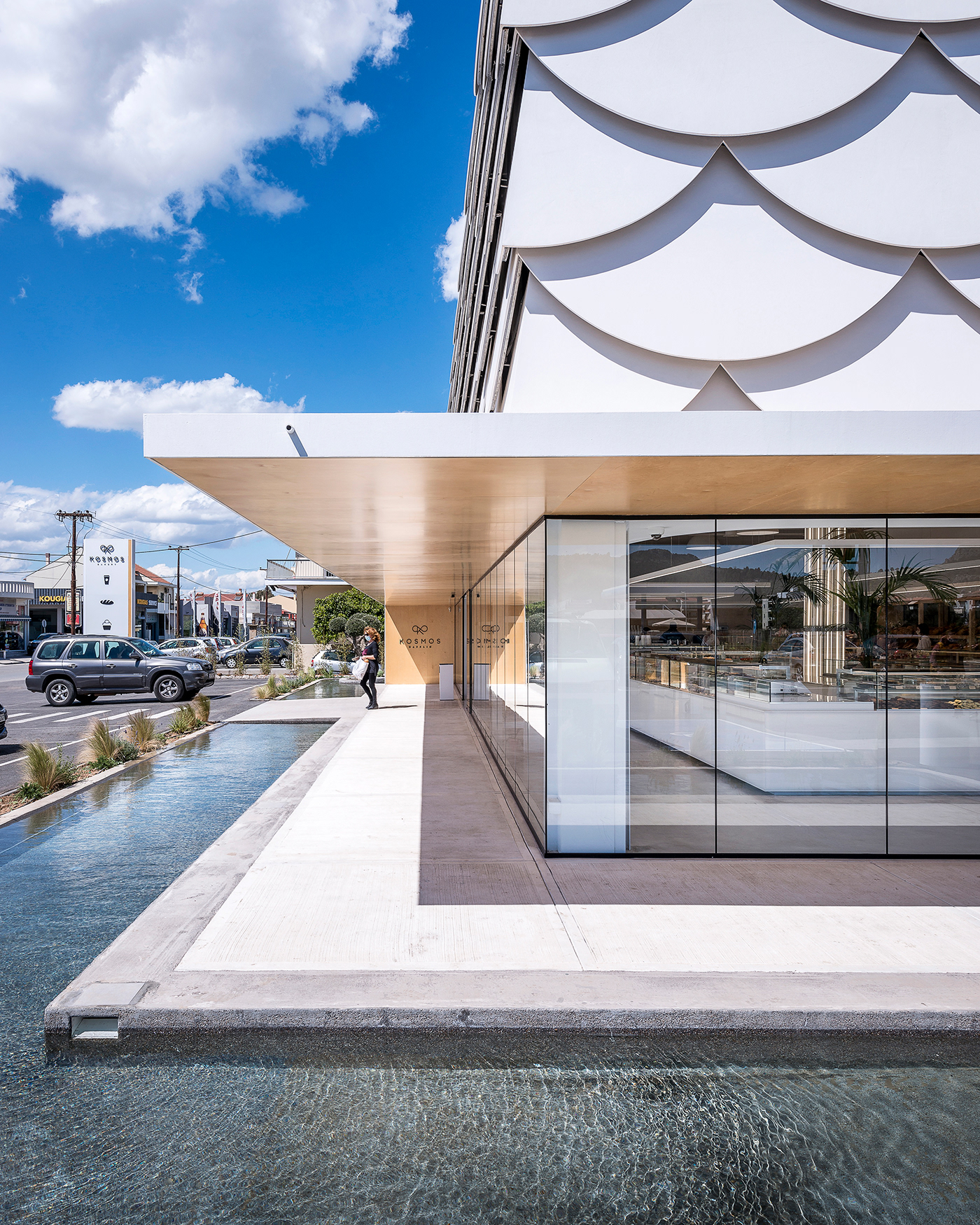
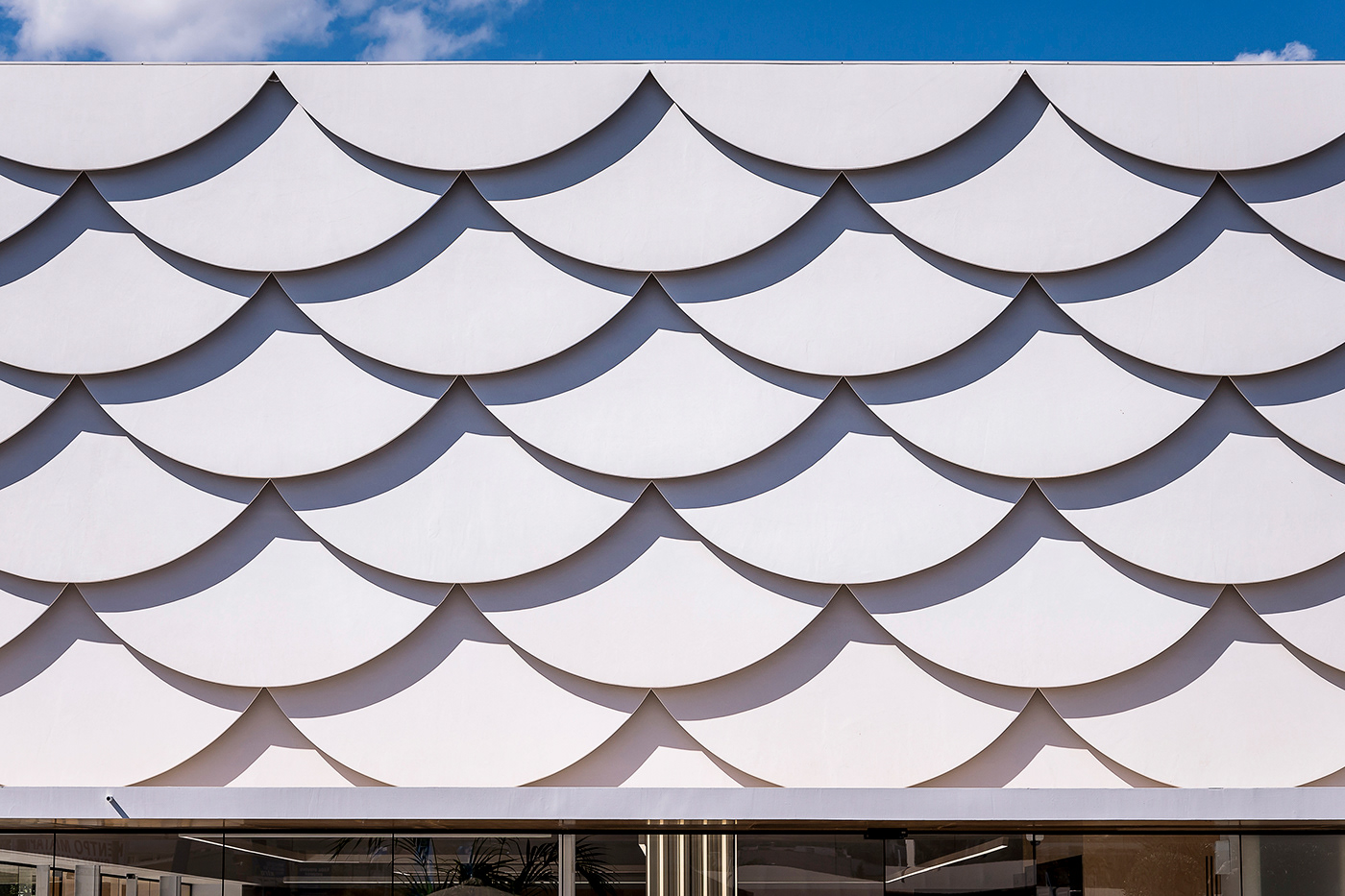

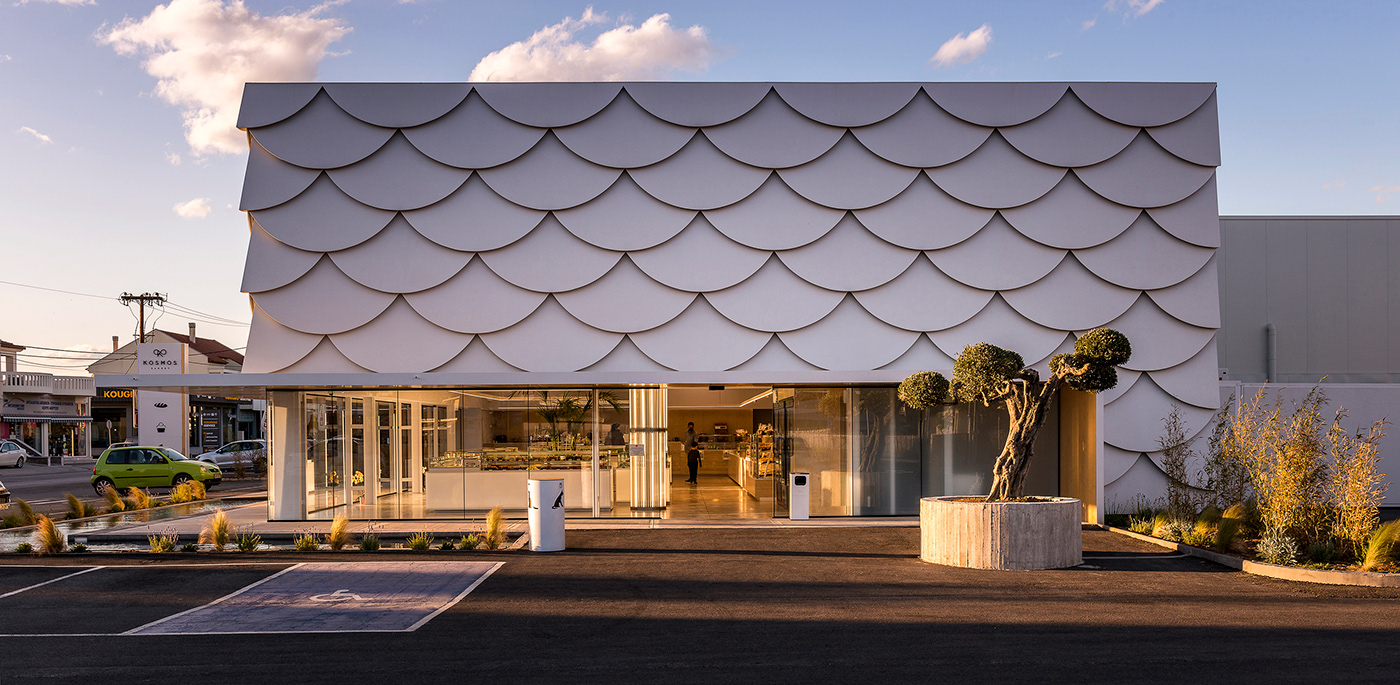




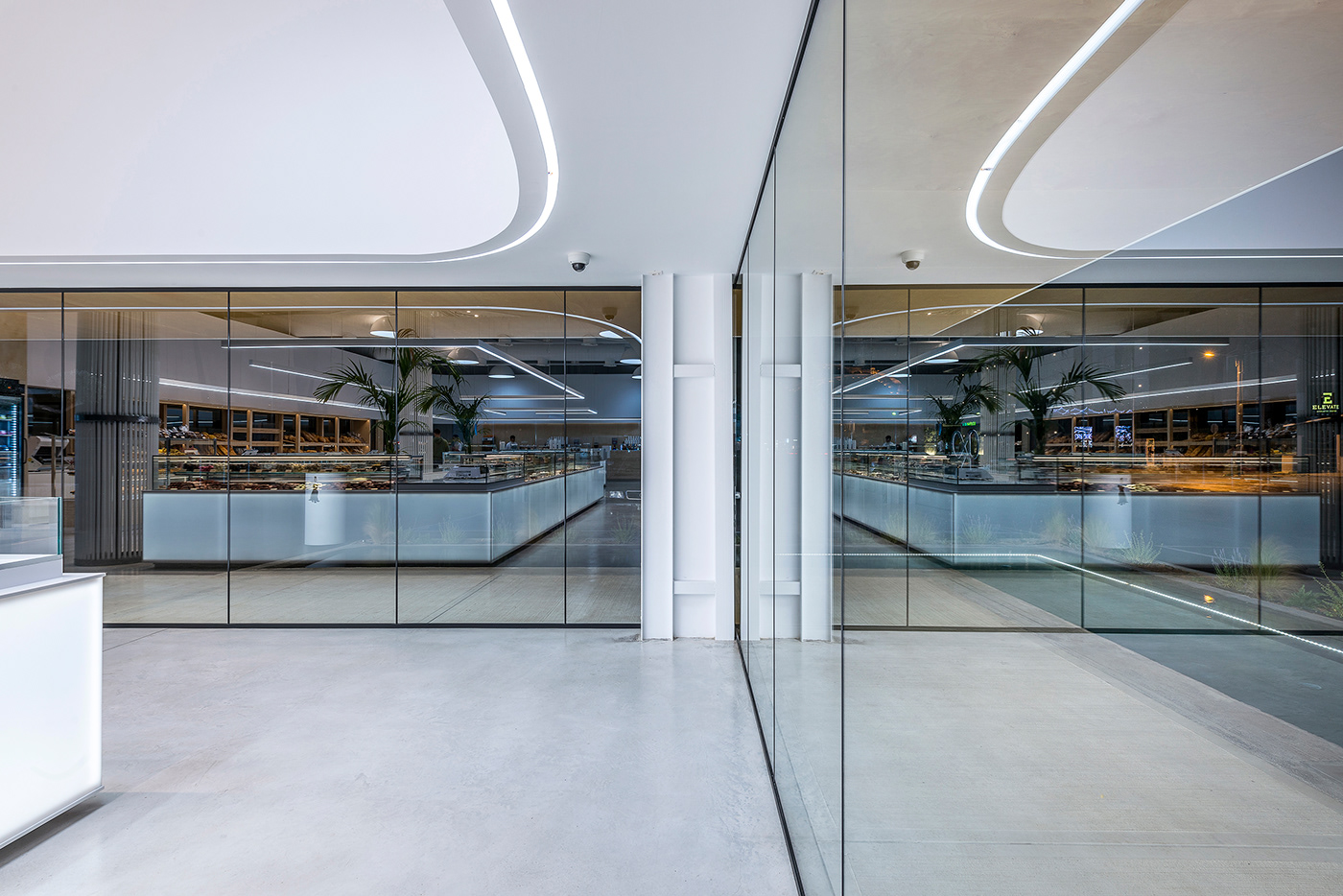

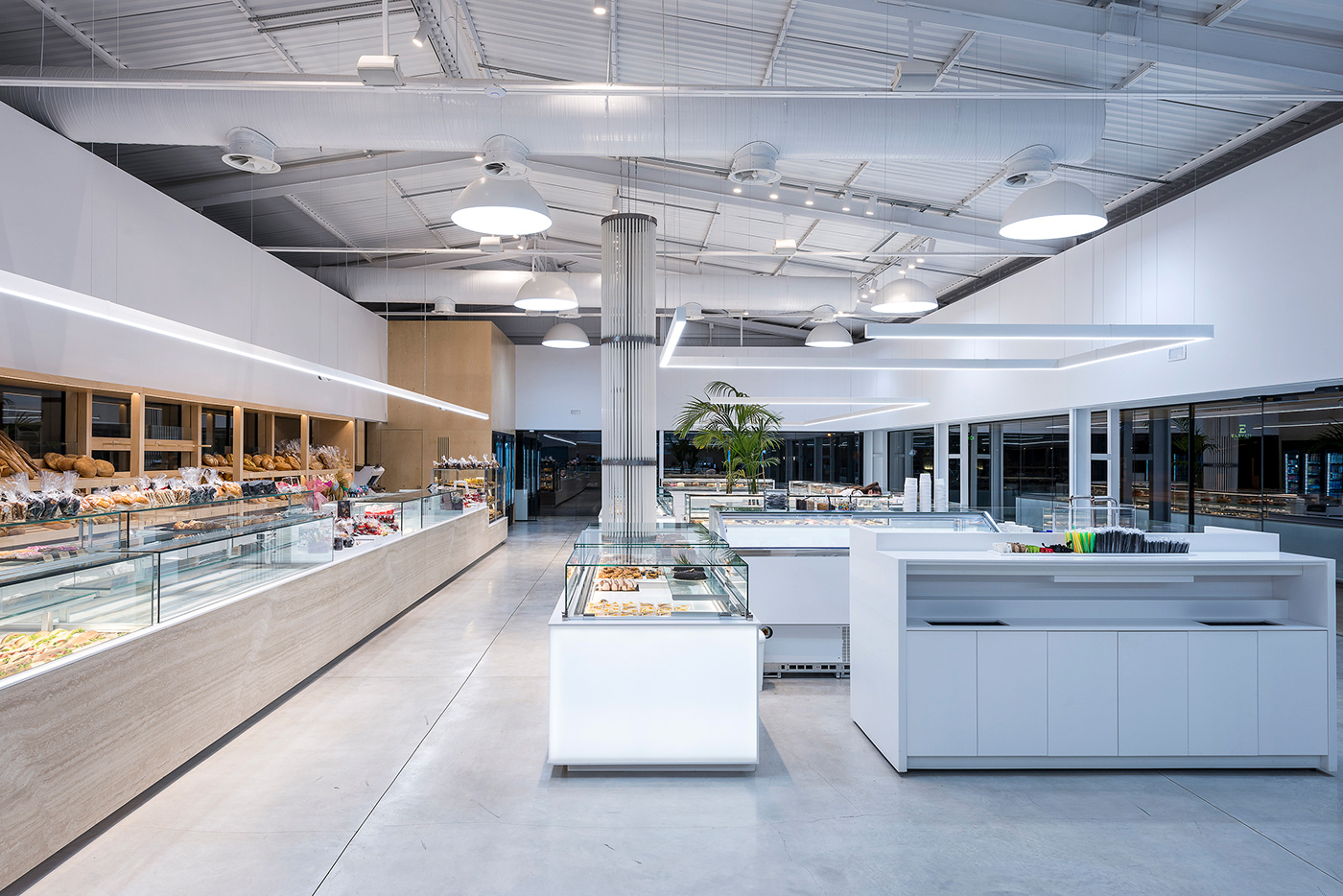
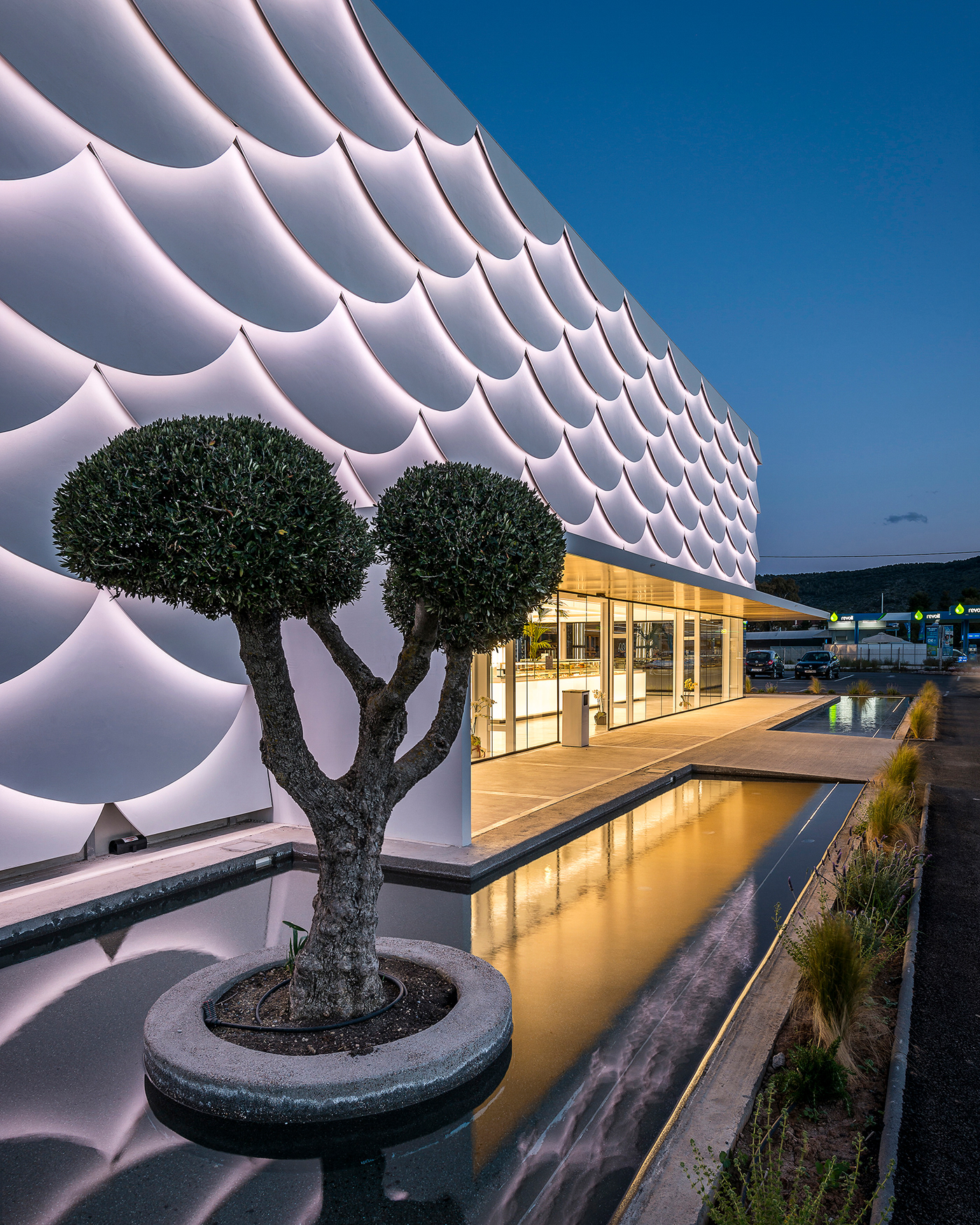
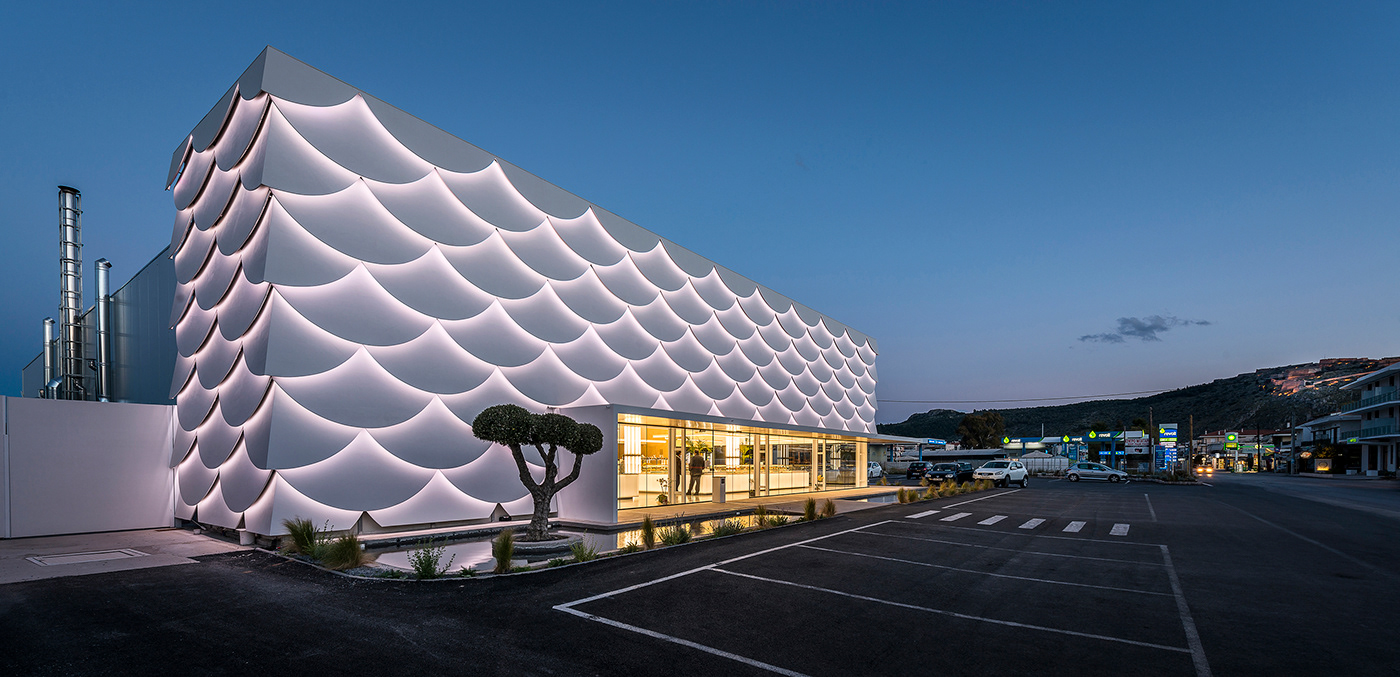

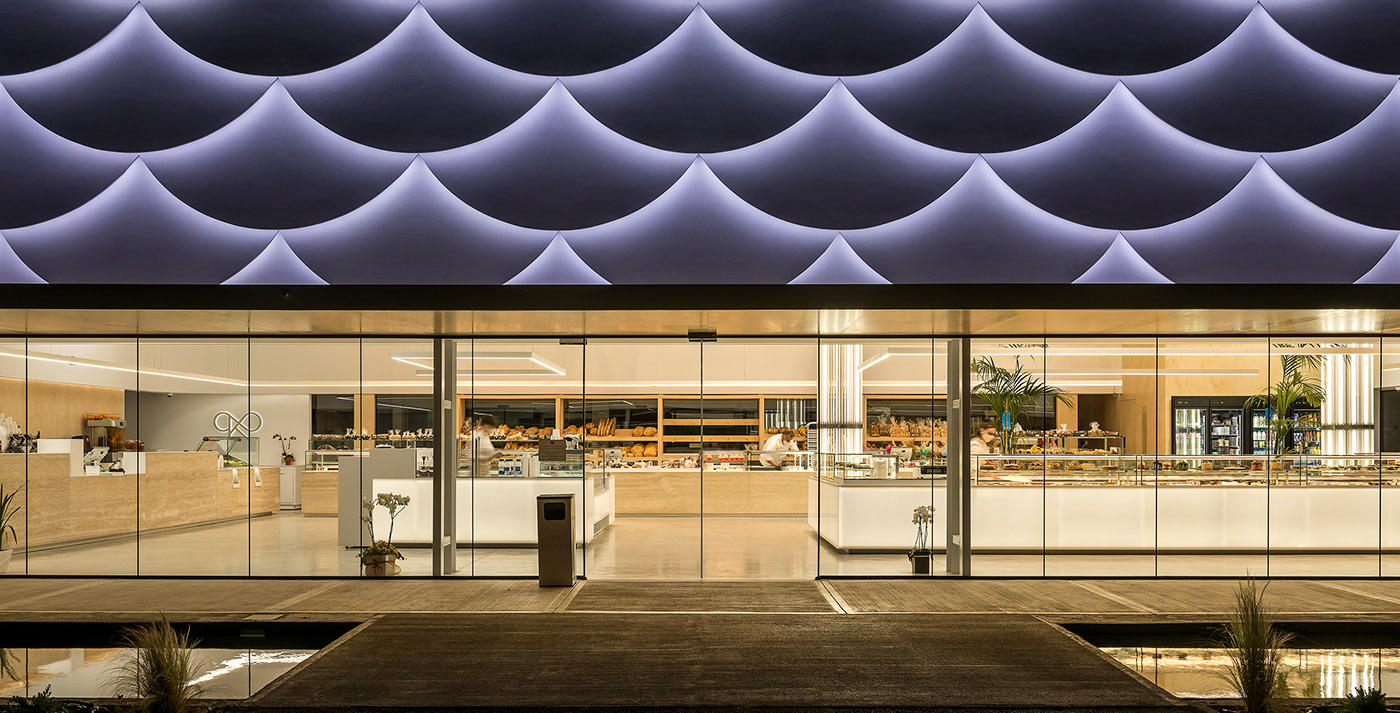


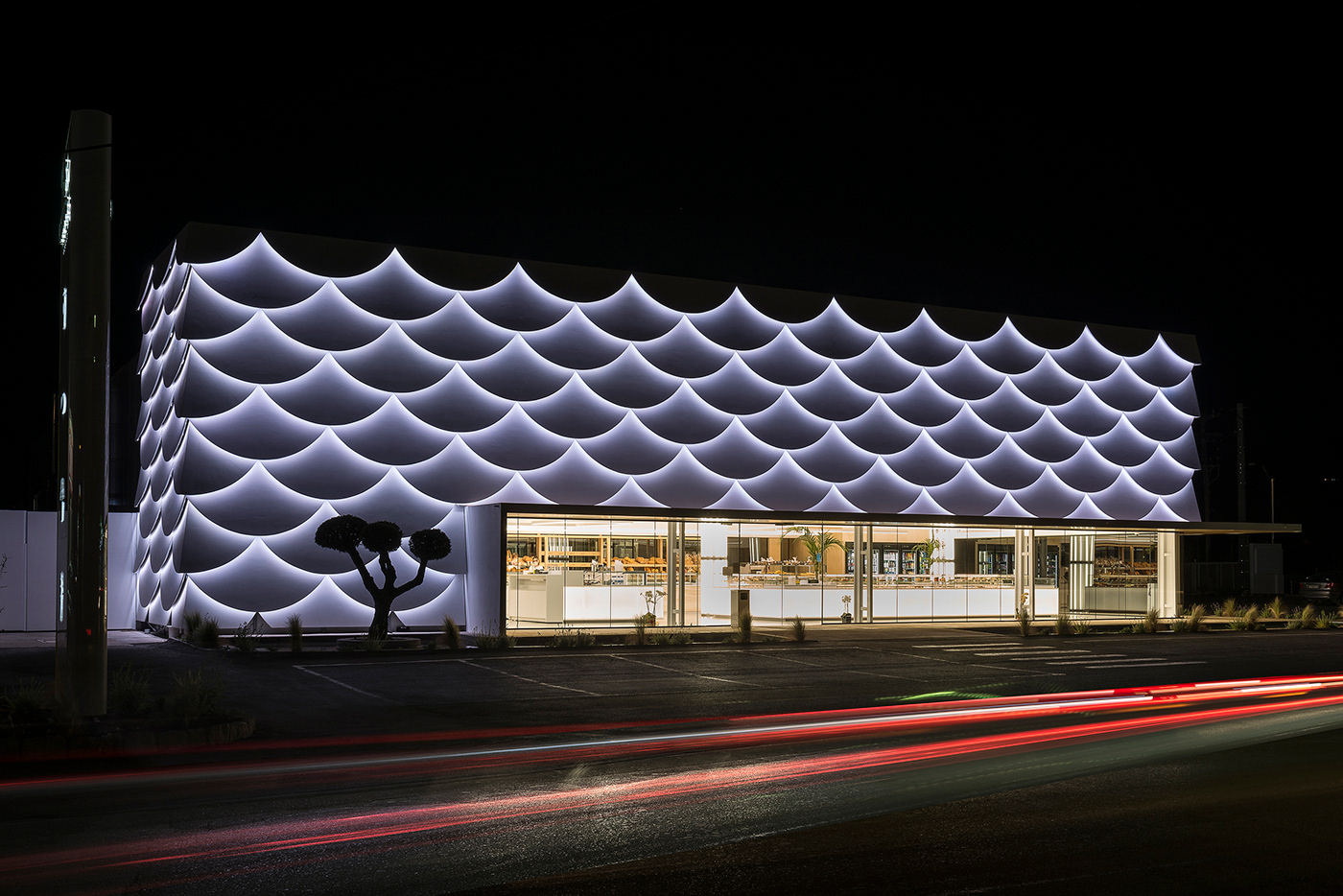
KOSMOS BAKERY & COFFEE
Nafplio Greece
designed by Studio 2Pi Architecture - Panagiotis Papassotiriou
Nafplio Greece
designed by Studio 2Pi Architecture - Panagiotis Papassotiriou
In an existing steel structure located in the entrance to the city of Nafplio, we were asked to design a modern bakery, food and coffee station for the passer-by, visitor and resident alike.
In a build environment of semi-urban character, the size of the building highlights a scale that is dominant and in combination with the surrounding open spaces urges us to handle the reconstruction as a proposal that moves within the limits of an autonomous and independent volume respecting at the same time the busy road in front of it.
In this context we had to manage two obviously opposite conditions, stasis that accompanies a monolithic volume and movement that is the perpetual fate of a central highway.
Thus arose the idea of forming a special shell which reflected the movement through a repetitive pattern on the building. This second skin would be the binding mortar between these two conditions. The shell had to take a form that would allow the alternation of emotions between day and night with the use of lighting as well as capturing the course of the sun during the day by creating shadows on it or on the surrounding area. Also, this shell had to be able to accommodate all the functions and auxiliary electrical & mechanical systems that had to be introduced.
The special form and use of the "scales" on the facades of the building came firstly from the need to protect the existing shell and secondly from a desire for the cover to be translated as a skin that embraces and soothes the building. In this way the building itself creates the alternations in the lighting and not the use of signs that we are used to in buildings with similar typology. The exterior lighting can therefore be changed according to the wishes and needs of the users so that it becomes a part of the design unified and indivisible from the shell.
Approaching the building the element of water creates a transitional zone between the public and the private space. Treating the threshold in an almost flat surface and with direct contact to the main road becomes important. The associations with the "scales" on the water are easy to create a reference to the coastal character of the city.
So there in the interval space between water and shell, asphalt and glass we placed two trees in opposite ends which refer to the history of the Argolida plain with its olive groves but also its historical relationship with prosperity and daily life of the inhabitants leaving in this corner of Greece.
As one enters the interior of the building, another world is revealed. From the low outdoor canopy space of 2.30m height we suddenly enter the main space which has 6.50m internal height.
The space is structured in such a way as to serve its commercial identity. This creates three zones with the product to be placed in the middle zone located in the direct field of view of the visitor.
The space is structured in such a way as to serve its commercial identity. This creates three zones with the product to be placed in the middle zone located in the direct field of view of the visitor.
Observing the space from its lowest level, all the way to the top, the materials have been selected and placed to create a sense of lightness from the ground upwards. At the base we have selected natural materials, marble travertino romano classico, which provides an earthy element to the base with its solid quality. The middle zone is made of marine plywood in a light color that essentially plays the role of the element of transition from the natural and earthly to the futuristic and more geometric shapes of the third zone that embraces the exhibition space. The third and top zone is a connection to the roof as it is the only element that surrounds all four sides of the interior and it grows perimetrically and embraces the space as a continuous ribbon painted white.
The interior lighting of the building focuses on the promotion of the food products but also on the creation of a single dynamic architectural element that is divided into two parts.
The first is the horizontal lighting section which leads visitors to the various areas of the exhibition and consists of linear luminaires above the product windows and as hidden lighting in the recesses of the plasterboard on the exterior walls. The second is the vertical section that appears as “fixed” lighting with a sculptural quality and it leads the visitor’s view from floor to ceiling following the rays of light that join through the metal crowns. The second part with the two columns of light has borrowed its form from the installation of the Welsh conceptual artist Cerith Wyn Evans as presented at the Pirelli Hangar Bicocca in Milan.
The areas for the preparation of food were developed and designed with three basic elements in mind: cleanliness, ergonomics and visibility. Clean surfaces that allow HACCP level health protocols in all areas. Ergonomic design so that the movement of employees and the transport of products is done smoothly according to the rules of hygiene and safety. Visibility and permeability, all of the above to be in open view to the end user who can evaluate how and by what means the products he will consume are produced.
In conclusion, it is important to mention that the owners also embraced and believed in our vision and intention to design a modern space that follows the needs of the end users and the specifics of its use while respecting the built environment around it that carries the historical and architectural legacy of the city of Nafplio.
[text by the architect]
Project ID:
Name: Kosmos
Type: Bakery / workshop / retail / service
Location: Nafplio, Greece
Architect: Panagiotis Papassotiriou, www.s2pia.com
Structural engineer: Anastasios Kladouhos
Electrical & Mechanical Engineer: Konstantinos Ilias
Design year: 2019-2020
Completion: 2021
Photography: Pygmalion Karatzas, www.pygmalionkaratzas.com
Client: Studio 2Pi Architecture



